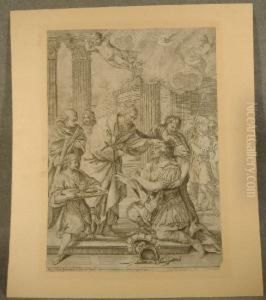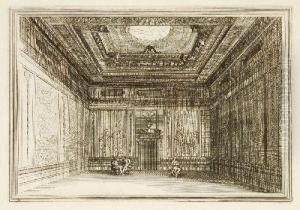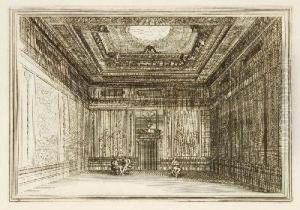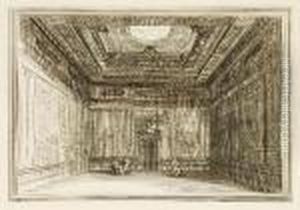Arnoldo Van Westerhout Paintings
Arnoldo Van Westerhout, also known as Arnold van Westerhout or simply Arnoldo Westerhout, was a notable Dutch-Italian engraver and painter of the Baroque period. Born in Middelburg, the Netherlands, in 1651, he moved to Italy to pursue his artistic career, a common practice among European artists of his time seeking to study the Renaissance and Baroque masters.
Arnoldo's work was mainly focused on engraving, though he was also skilled in painting. His engravings included portraits, landscapes, and religious subjects, characterized by their fine detail and clarity. He became particularly well-known for his engravings after famous paintings by Italian masters, which helped to spread the renown of Italian art throughout Europe.
Westerhout's move to Italy saw him settling in Rome, which was then a major hub for artists. He became part of the vibrant and competitive art scene of the Eternal City, where he had the opportunity to study the works of great artists such as Raphael and Michelangelo. His skills as an engraver were much in demand by the patrons and collectors of the time, who sought to reproduce and disseminate the artworks held in Italian collections.
Throughout his career, Arnoldo worked on various significant projects, including a series of engravings portraying events from the Bible and classical mythology. He was also involved in creating prints that depicted the antiquities of Rome, which were popular souvenirs for the Grand Tourists who visited the city from all over Europe.
Arnoldo Van Westerhout died in Rome in 1725. His legacy lived on through his prints, which continued to influence the art world and provided a visual record of the artistic achievements of the Italian Baroque. His work is an important part of the history of printmaking and serves as a testament to the cultural exchange between the Netherlands and Italy during the Baroque era.



